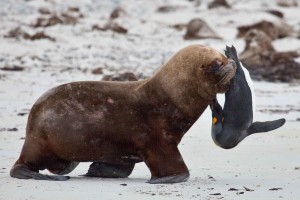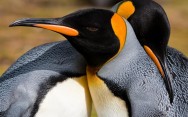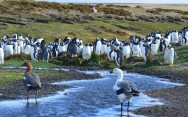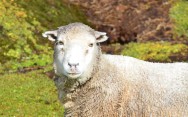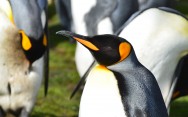Although Volunteer Beach does have the occasional seal or sea lion visit they are few and far between. Sea Lions appear between November and March when there are lots of penguins. You may see them surfing the waves on the lookout for prey. Once in a while a female elephant seal appears, no males have yet been spotted at volunteer beach. At the end of Volunteer Point you will find several hundreds of seals on the rocks, unfortunately it is not possible to get to them by land and you will not see them on your visit to the nature reserve.
Anywhere along the coast right from Volunteer Point to Cow Bay it may be possible to see the odd fur seal or sea lion resting on the beach. The main breeding area for sea lions is about 15 miles up the coast from Volunteer Green in Port Louis farm ground. This is private land and not accessible by the public.
Seals
During the 18th and 19th centuries the Falkland Islands fur seal was brought to the very brink of extinction. recovery of the population has been slow progress but they are now at a moderate level with an estimated 15,000 – 20,0000 in the area. They are now protected under British law.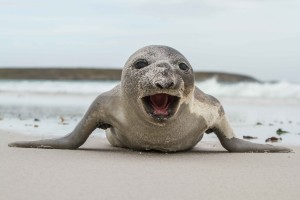
The sub species of South American fur seal residing in the Falkland Islands has a scientific name of Arctocephalus australis australis
They feed on small crustaceans like lobster krill which are not commercially harvested around the islands and therefore haven’t been affected as much as species reliant on fish and squid that is commercially harvested.
Found mainly on the North and West coasts on the rocky shores of the offshore islands they are not the most easily accessible creature on the islands . Most areas populated by the fur seals have some form of protection from the sun yet have easy access to the ocean.
The adult male fur seals are normally about a third longer than the females and 3 times heavier. The males calls include a bark or whimper, a guttural threat and a submissive call. Females growl and have a high pitched wail to attract their pups.
Seals are fast in the water, but due to their thinly webbed front flippers and that their hind flippers angle backwards and don’t rotate, they basically walk on their bellies, belly flopping across the land.
A seals teeth are very sharp, even the molars. They have on average 34 – 38 teeth which they use to grasp and shred fish that are too big to swallow. All the seals you may see in the Falkland Islands are wild, keep yourself and the seals safe by keeping your distance.
Sea Lions
Between 1930 and 1960 the numbers fell by 95% however it is now believed commercial hunting may not have been the defining cause. One consideration is the warmer waters in the breeding grounds between 1930 and 1950 which coincided with the decline in the population which may have affected the availability of their prey.
Sea Lion breeding starts in December when the bulls establish territories with the females arriving later that month and January to pup. The females mate soon after pupping but continue to look after their pups for 12 months or longer. Breeding takes place on sandy shores fringed with tussac grass. During the winter period, none breeding sea lions appear to stay in the Falkland Islands
Lactating female sea lions are known to feed anywhere from the shallow waters close to the breeding site to 45 km away in depths of 200 m living on hake, southern blue whiting, hoki, red cod and cephalopods and lobster krill.
Southern sea lions tend to be wary of humans. Breeding animals will prefer to enter the sea than be within 50 – 100 m of a human.
Unlike a seal, sea lions are able to “walk” on land by rotating their hind flippers forward and underneath their big bodies.


